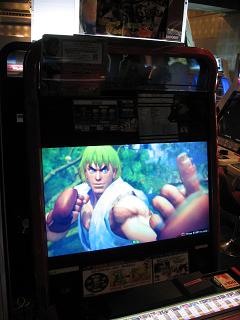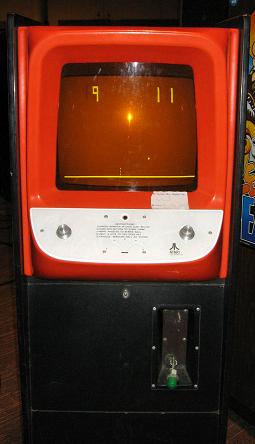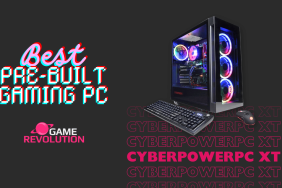The arcade is dead. This is not news to anyone in the US. But apparently – and lucky for us all as gamers – the Japanese never got that memo, because they’re everywhere in Tokyo. And it’s a beautiful, beautiful thing, because here in the land of Uncle Sam, the local hangout arcade has died a painful, painful death as a result of the changing times.
Back in their heyday, arcades were everything a casual player could want: a buffet of different titles, clumpings of the same game so everybody can have a turn, usually thumpings of '80s pop-rock in the background, maybe a crowd around the one kid who was really, really good at Pac-Man or Donkey Kong. Get that image into your head – a guy with a Flock of Seagulls haircut really into his turn at the Galaga machine and three of his friends cheering him on with their own quarters at the ready.
It’s funny that I’m even talking about this; when I think of the next generation of gamer, I think of my nephew. He’s just about to turn 14, and aside from a bowling alley and a Chuck E. Cheese's restaurant, he’s never been to an arcade. Not what I think of as a real arcade, anyway. Today's "arcades" are usually just a collection of cabs in an adjacent room from the main dining area somewhere. He has the Xbox Live Arcade to play “old games” and play in the comfort of home where he can yell at the idiots he might be playing Call of Duty with.
What happened to the arcade? What brought the US arcade game market down with a thunderous crash, and making old farts like me (at the ripe old age of 26) whine and moan for the good ol’ days of smoky rooms, eye strain, and outdated games?
Two major factors have kept US rooms from opening doors again. The first is that players – let’s be honest – are primarily attracted by graphics. Back in the '80s, if you wanted to see some great visuals and the newest games, you ventured out into the world looking for them. If a new game came out, chances were good that it was either in the arcade first or simply exclusive there because no home console could handle them at the right performance level. Pac-Man for the 2600 is a perfect example of this: The arcade version was the full experience, while the home port was… well, ugly, flickering, and dreadful.
The second factor is an off-shoot of the first. While the home ports got better over the years, the arcade was unable to keep their edge in graphics, gameplay, or depth. Also, with games on home consoles exploring new genres and possibilities, the arcade scene started to stagnate; the only edge they might have had in later years were their special, arcade-only controllers. Racers like Gran Turismo might have had the market cornered on realism, but as far as controlling games like Daytona USA and Hydro Thunder, a racing arcade cockpit could really bring a player into the experience. Still, once racing wheels were available to the market for some of those games (including a wheel for the N64 that could be used to control the faithful port of Hydro Thunder), there was no reason to go out to play just that.
 To make matters worse for arcade operators and cabinet repair people, over the past decade, the Internet has changed the world of gaming further. Up until around 2000 and the launch of the Dreamcast, the only ways to play with your friends were to invite them over or to get up and walk/drive to the cab carrier of your choice. With the rise in Internet speeds, drops in price to connect, and quality of the games rising, true online play has become a reality and pounded yet another nail into the already-sealed coffin. Why go out when you can outscore and p'wn your friends from your couch? Or another way of looking at it, who nowadays would be willing to go to an arcade and risk looking like a n00b on a DDR pad, or face the local champion in Super Street Fighter IV?
To make matters worse for arcade operators and cabinet repair people, over the past decade, the Internet has changed the world of gaming further. Up until around 2000 and the launch of the Dreamcast, the only ways to play with your friends were to invite them over or to get up and walk/drive to the cab carrier of your choice. With the rise in Internet speeds, drops in price to connect, and quality of the games rising, true online play has become a reality and pounded yet another nail into the already-sealed coffin. Why go out when you can outscore and p'wn your friends from your couch? Or another way of looking at it, who nowadays would be willing to go to an arcade and risk looking like a n00b on a DDR pad, or face the local champion in Super Street Fighter IV?
Still, there have been exceptions to those three factors, especially in recent years. There was a small resurgence of existing arcades making some coin once again with the US release of Dance Dance Revolution, the phenomenal rhythm game launched by Konami in the later years of the PSOne. In Japan, new breeds of arcade-only experiences are available. Players game enjoy mech games in gigantic pods with big control panels, mahjong-specialty games are dropped into random corners for some added currency, even soccer games are available with packs of cards similar to eReader games back in the GBA’s heyday. All of these, along with the classic across-the-cab play of fighting games (Street Fighter IV one-on-one back in 2008 is one of my favorite memories in The Land of the Rising Sun) have kept the dark, smoky rooms dimly lit while their US counterparts sank into gaming quicksand.
Will we ever have arcades here again? I seriously doubt it. It’s just a part of the passage of time for US gamers, sad as it might be for some of us. There are conventions – like the recent Classic Gaming Expo in Las Vegas back in August – to gather with like-minded lovers of the good ol’ days, but otherwise we’re regulated to the corners of bars, specialty places like Dave & Busters and Chuck E. Cheese's, and the occasional stubborn bastard with a handful of cabinets and more money than sense trying to regain some of what they loved long ago… one lonesome token at a time.
I do implore you… enjoy those games, no matter how you do it. If you play Sinistar while at the local laundromat or toss a quarter in for a round of Street Fighter II in your neighborhood run-down liquor store like I’ve done, even if you manage to find one of the sparsely-populated home-grown arcades still struggling out in the middle of nowhere, have fun with the game. The experience of gathering with a crowd of crazy gamers might be gone, but the games are still there. And they’re still fun as hell. As for my nephew, he might love the new stuff, but there's always a game of Double Dragon left in him.







